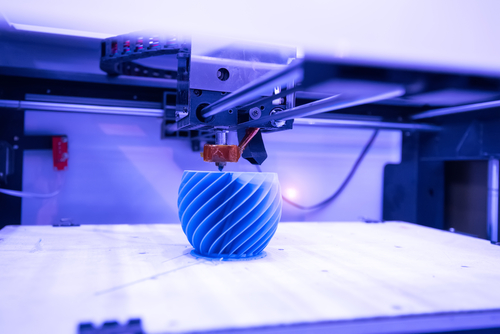
The UK is a nation of importers; from oil and cars to machinery and clothing. In May 2017 alone, £40.2bn of goods arrived in the UK, an increase of 5% on the month before. This rise in British importing is not surprising given that China is now responsible for a quarter of global manufacturing; creating 60% of the world’s shoes and 70% of its mobile phones. Yet, there is a considerable environmental cost from importing products. Shipping is responsible for about 1,000m tonnes of global CO2 emissions each year, with a further 781m due to aviation. It is expected that shipping will account for 17% of global emissions within three years. ‘Greentech’ solutions – including 3D printing, Artificial Intelligence, and machine learning – have the potential to help reduce these figures.
Shopping to save the planet
The decline in local manufacturing is often seen as unavoidable to many, but actually this isn’t the case. With new technologies available to UK industry, manufacturing can, in fact, be revitalised and made significantly more sustainable. A key technology that can facilitate this change is 3D printing – a technology expected to be worth $33bn by 2023.
3D printing can produce a net positive environmental impact, with raw materials imported from overseas taking up considerably less space than finished goods ready to hit the shelves. In reducing the capacity required to transport the same materials, and then locally manufacturing the final products, 3D printing can have a major environmental benefit, reducing shipping demands globally.
3D-driven manufacturing also has the distinct advantage of appealing to changing consumer purchasing habits. Customers are becoming increasingly aware of the environmental impact of their consumption; research found 84% of consumers stated they actively seek out responsibly-sourced and made products where possible. Given that 3D printing technology can drastically reduce an item’s carbon footprint, manufacturers can meet customer demand for sustainable goods alongside gaining a competitive advantage.
Adding the next layer
On its own, 3D printing has huge potential but its real impact will come when it is supplemented by other emerging technologies. By introducing Artificial Intelligence (AI) to work alongside 3D printing, manufacturers can create a feedback loop where intelligent machines learn how to speed up the development of the printing technologies. For example, when supported by machine learning, 3D printers can ‘learn’ about the use of materials. This could eventually mean the technology is able to self-determine which printing material will create a better product. For instance, if a specific section needs to be able to support more weight, or where designs can be re-shaped to save materials.
These advances can ultimately lead to a cumulative reduction in waste, making the products both cheaper to produce and even more ‘green’ and environmentally friendly.
Adding an extra dimension
To achieve the true potential of 3D printing, it is vital that manufacturing organisations have at their disposal all the information necessary to make the best decision. Equipment is not enough by itself – manufacturers must be able to choose the best materials and chemicals for use. This could involve assessing them on factors including cost, environmental impact and/or chemical by-products. Of course, as with all other emerging technologies, there are challenges to be overcome. When utilising AI alongside 3D printing, it is wise to remember the GIGO principle (garbage in, garbage out). Without the input of accurate scientific data the results of machine learning algorithms will be, at best, mixed, and, at worst, disastrous.

As 3D printing is still an emerging technology, work is ongoing into the materials and technology best used in manufacturing. It is important that organisations maintain awareness of innovations in the field, meaning they need access to the latest data – from scientific literature and safety reports to media stories and conference papers. This will enable them to adapt and respond seamlessly as the industry progresses. From both an environmental and commercial perspective, R&D departments must have tools that allow them to find the data to support their innovation quickly and easily.
Frequently, business is seen to be at odds with environmental issues, but 3D printing is the perfect example of how taking a ‘green’ approach can have significant business benefits. Businesses need to wake up to the advantages of sustainable technology, or risk being left behind by industry and consumers alike. It is vital that we reassess how the manufacturing industry operates – for the sake of our planet.






